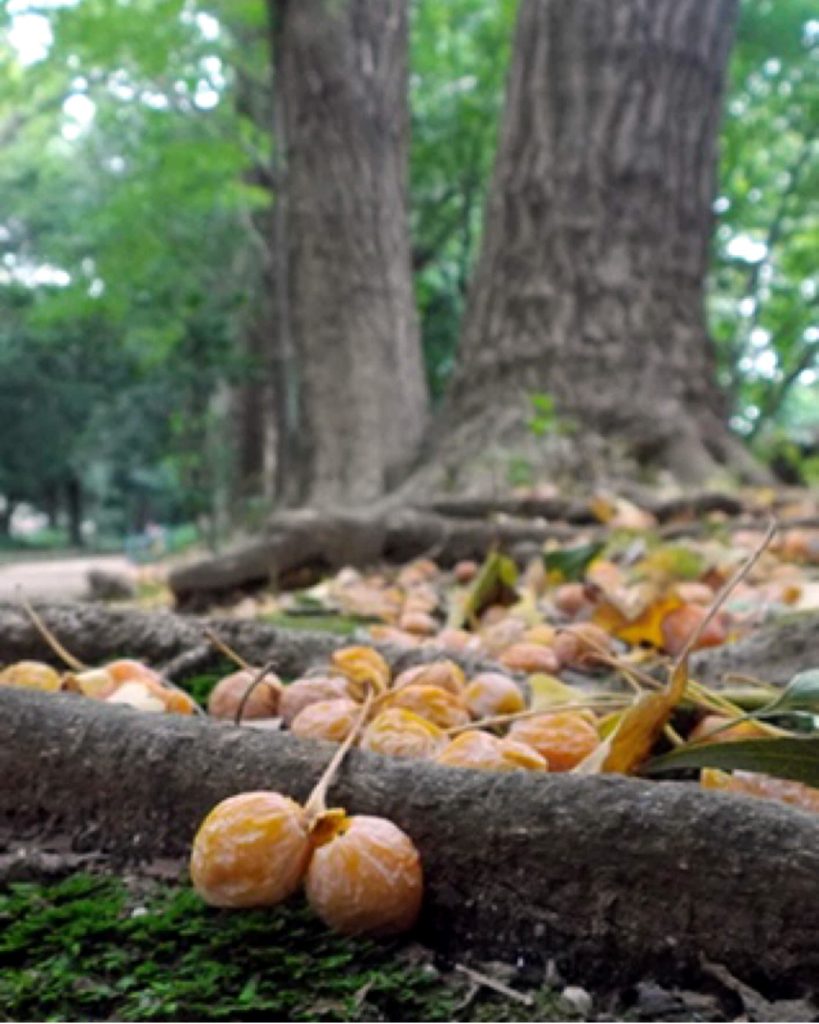
When I go to the park early in the morning, I find many ginkgo nuts have fallen due to last night’s wind. People can be seen here and there picking them up, but there are still untouched areas. A little later, a crowd of people arrives, and in no time, the fallen ginkgo nuts disappear. By that time, some people come with long bamboo poles and fishing gear to knock down the remaining ginkgo nuts. The jade-like color of the nuts when you crack open their shells is truly reminiscent of ancient fossils. Ginkgo trees are survivors from over 100 million years ago, thriving in the era when a diverse range of large dinosaurs like Brachiosaurus, Stegosaurus, and Apatosaurus evolved and flourished. They are believed to have escaped extinction during the Ice Age when most other plants and animals perished due to their relatively warm habitat in the China region, where they are originally from. Ginkgo nuts are roasted and eaten or used in dishes like chawanmushi, despite their slightly bitter and chewy texture, which has its own unique appeal. However, it’s advised to limit ginkgo nut consumption to 1-2 nuts a day for children and to avoid giving them to those under 5 years of age. For adults, it’s recommended to consume about 6-7 nuts a day as a guideline, emphasizing the importance of not overindulging.
朝早く公園に行くと、昨夜の風で沢山の銀杏が落ちていました。あちらこちらで銀杏拾いをしている人がいますが、まだ手付かずの所もあります。もう少しすると大勢の人達がやって来て、瞬く間に落ちた銀杏は無くなります。その頃になると長い竹竿や釣具を持って銀杏を落としに来る人もいます。殻を割った時の翡翠色をした実はまさしく行きた化石を彷彿とさせるものがあります。銀杏は、ブラキオサウルス、サイスモサウルス、アパトサウルスなど多様な種類の大型恐竜が進化し繁栄した時代に最も繁栄した植物で、1億年以上も前から生き続けている植物です。ほとんどの動植物が絶滅した氷河期に、比較的に暖かかった中国地方で絶滅を免れたと考えられており原産は中国と言われます。炒って食べたり、茶碗蒸しに入れて食べたりしますが、ほろ苦くてもっちりした食感がなんとも言えません。ただ、小児は、1日に1~2個に抑え、5歳未満には控えるようにと言われています。 大人でも1日6~7個程度を目安に、“食べ過ぎない”ことが重要です。
